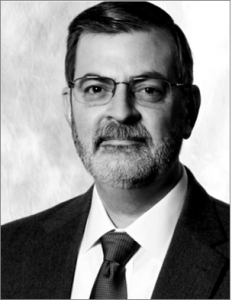
Health navigation helps individuals and companies through these challenges. It includes clinical services, of course, but it’s much more than that. Knowing what services are needed, where to get them, and in what timeframe are critical elements to getting on the right path to recovery.
Fundamental Premise of Health Navigation
People can’t always tell at the onset how serious an injury or illness is. So, sometimes they go to an ER when they could have gone to a doctor’s office, or they go to a doctor’s office when they could have cared for themselves. Other times people underestimate or don’t recognize symptoms, and look back wishing they had realized how serious something really was – this regret can make them more likely to overreact the next time they are confronted with a health concern.
The fundamental premise of health navigation is getting people the care they need when and where they need it, which removes burdensome guesswork. A best-in-class health navigation provider should:
- Have clinicians which navigate people to the right level of care at the right time, in the right place.
- Have systems to help people determine the severity of each case and the best course of action for treatment.
- Provide the needed care or guide patients in self-care whenever possible.
- Make a referral when further care is required
People know overtreatments and over prescribing exist, but they don’t know how to tell when it is happening to them. What’s the best practice?
Evidence-Based Medicine
Evidence-based medicine is the best practice; it represents the science of proven medical effectiveness. Protocols, algorithms, and guidelines need to be built on evidence-based medicine. As a result, unnecessary treatments and prescriptions are avoided while required treatments are obtained right away.
People want to believe that all providers follow best practices, but still unnecessary care persists, including surgeries, prescriptions, therapy, and other interventions that contribute to high costs for everyone.
The healthcare and insurance systems have evolved to include many conflicts of interest, financial biases, and administrative costs. Effective navigation requires guiding patients to the right destination rather than following the momentum and pressures of a complex claims-driven system. Working with a provider who operates transparently and without conflicts of interest offers the key difference of advocating for patients rather than treating them.
Access to Care
It can take weeks to get an appointment. Lack of access to care drives frustration and drives people to go to more expensive options such as urgent care centers and ERs.
Clinics can and should be convenient and accessible, mobile units should go to patients, virtual health services should be available on-demand 24/7, and a telephonic triage service should be preloaded with clinics that accept walk-ins and new patients. In addition, staff should know the in-network providers in their patient’s communities, establish relationships, and have the tools necessary to gain appointments.
Serious illness and injury involves a lot of emotion, which affects people’s decision making. It feels awkward to tell a provider you want a second opinion or other options. It is not easy to know if a provider is in-network or out-of-network, and it is near impossible to find out in advance what services cost.
Decision Support
Navigation requires decision support – not just information, but recommendations. People need reassuring, they want to know the risks, and they appreciate assistance.
Health navigation gets people through the system to achieve better clinical outcomes and lower costs. That’s good for individuals, and it’s also good for their employers, who bear much of the cost of caring for their employees and their families, and who want their employees to be healthy and productive.

Author Curtis H. Smith, Executive Vice President, joined Medcor in 1995. He helped develop Medcor’s injury triage system and holds several US and foreign patents on injury assessments methods. Smith has taught and practiced in EMS as paramedic and dispatcher. He currently supports Medcor’s business development and marketing teams. http://medcor.com. Contact: csmith@medcor.com














